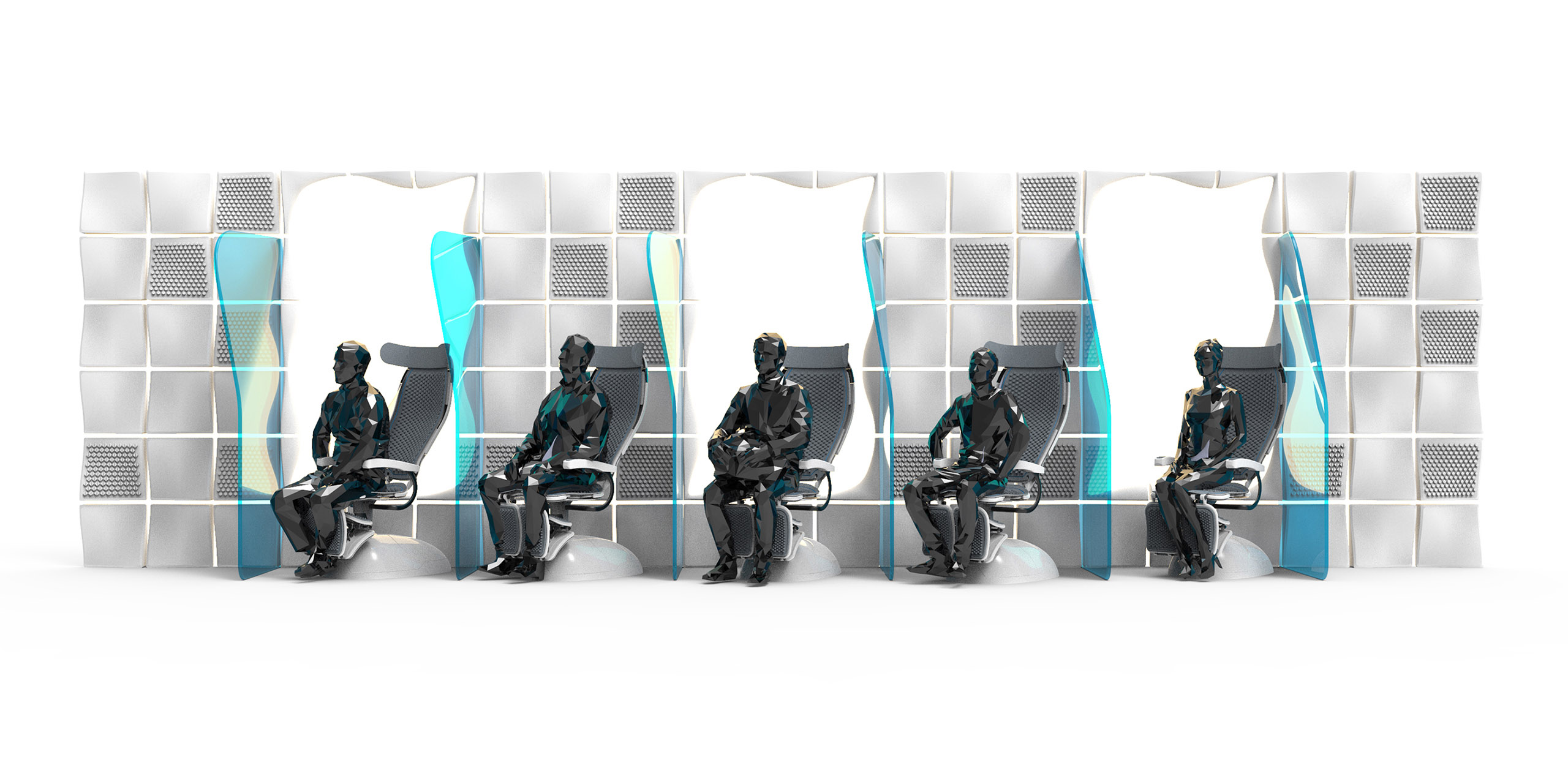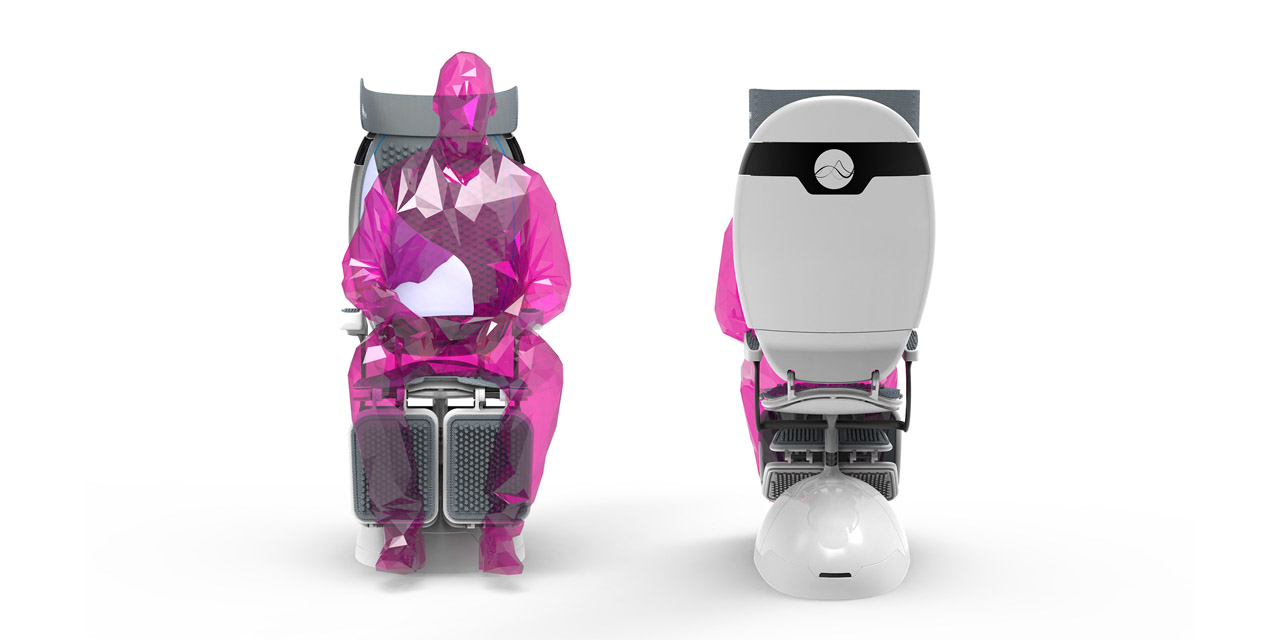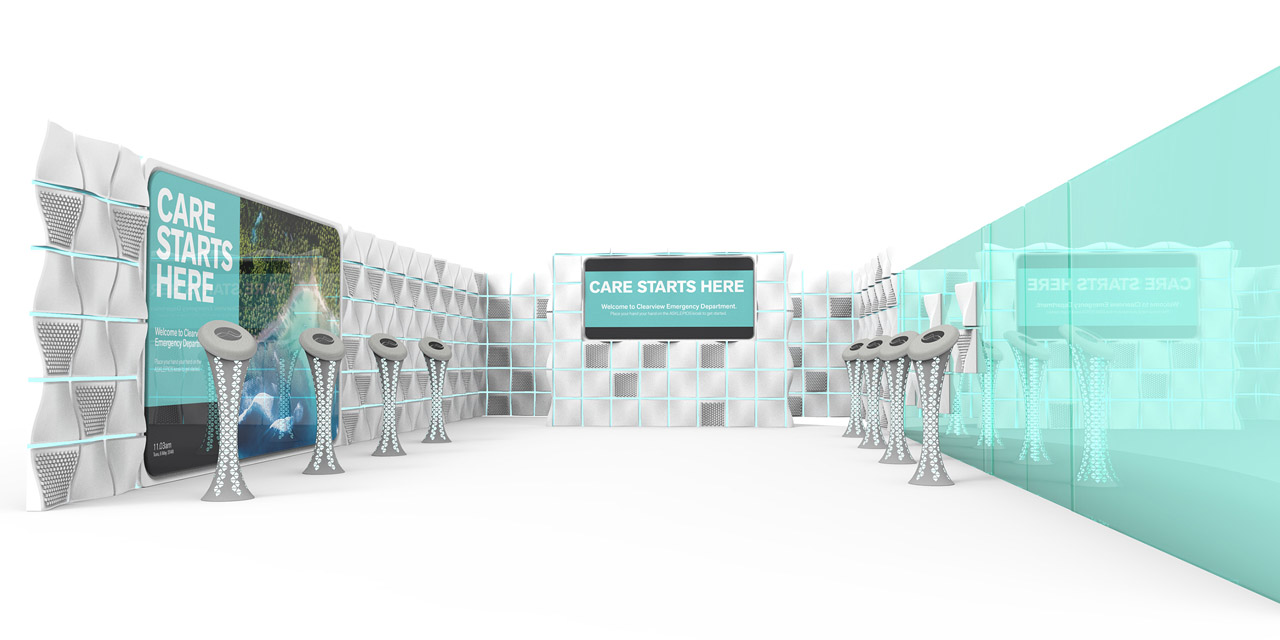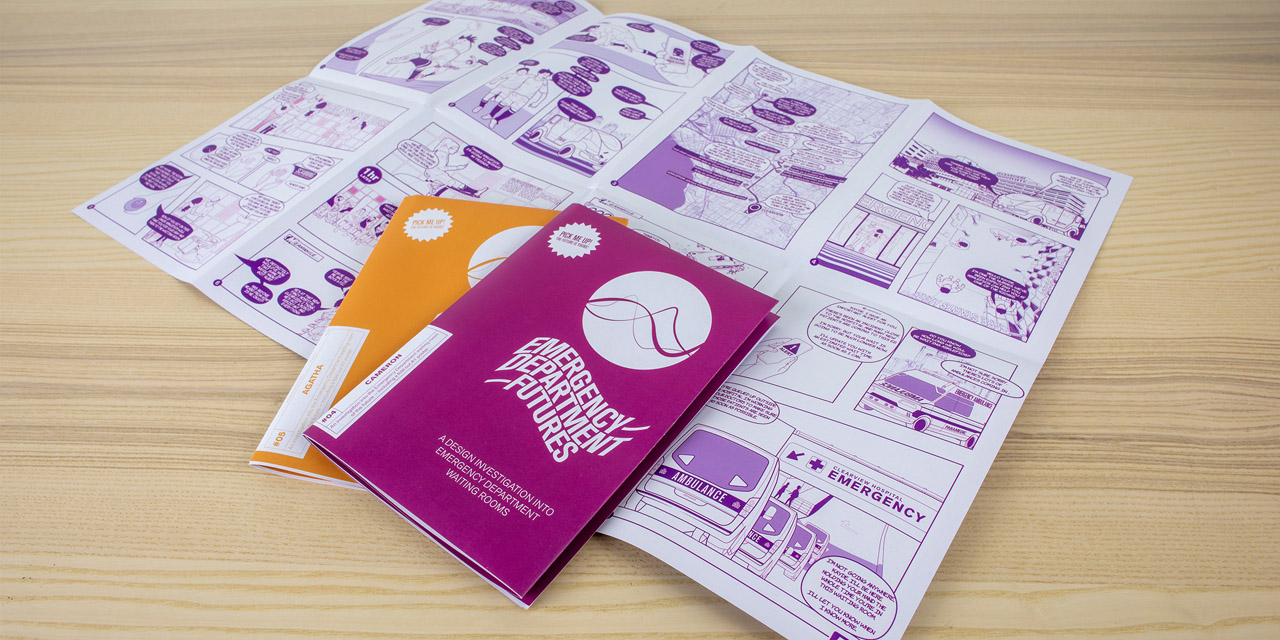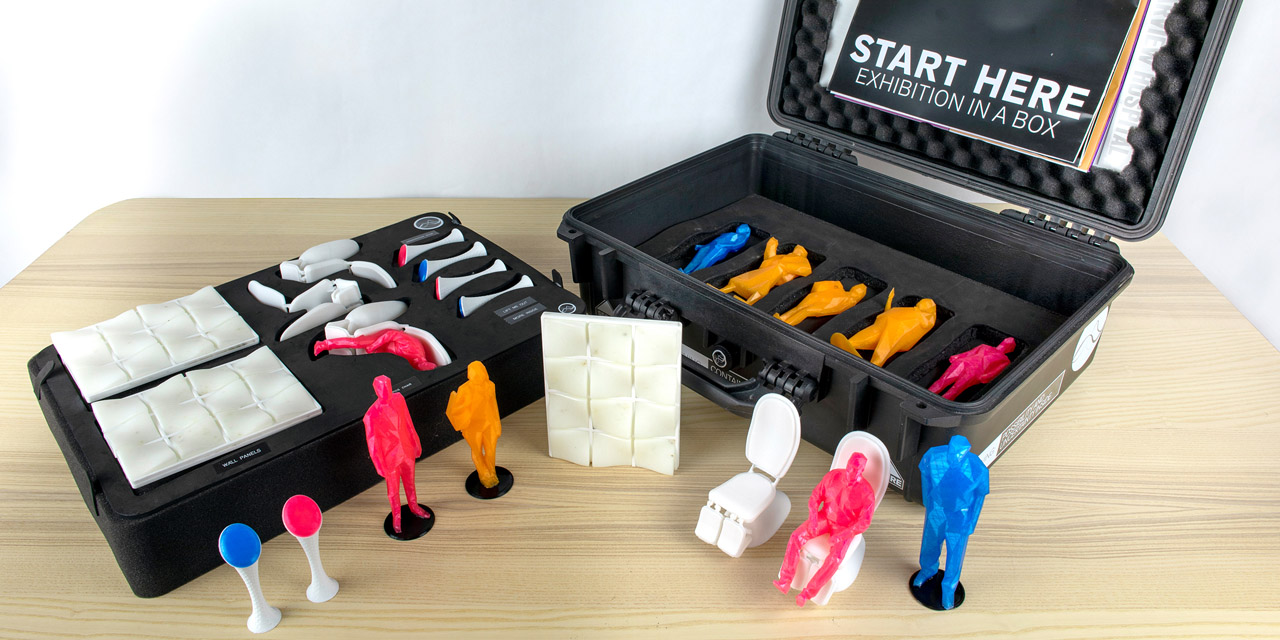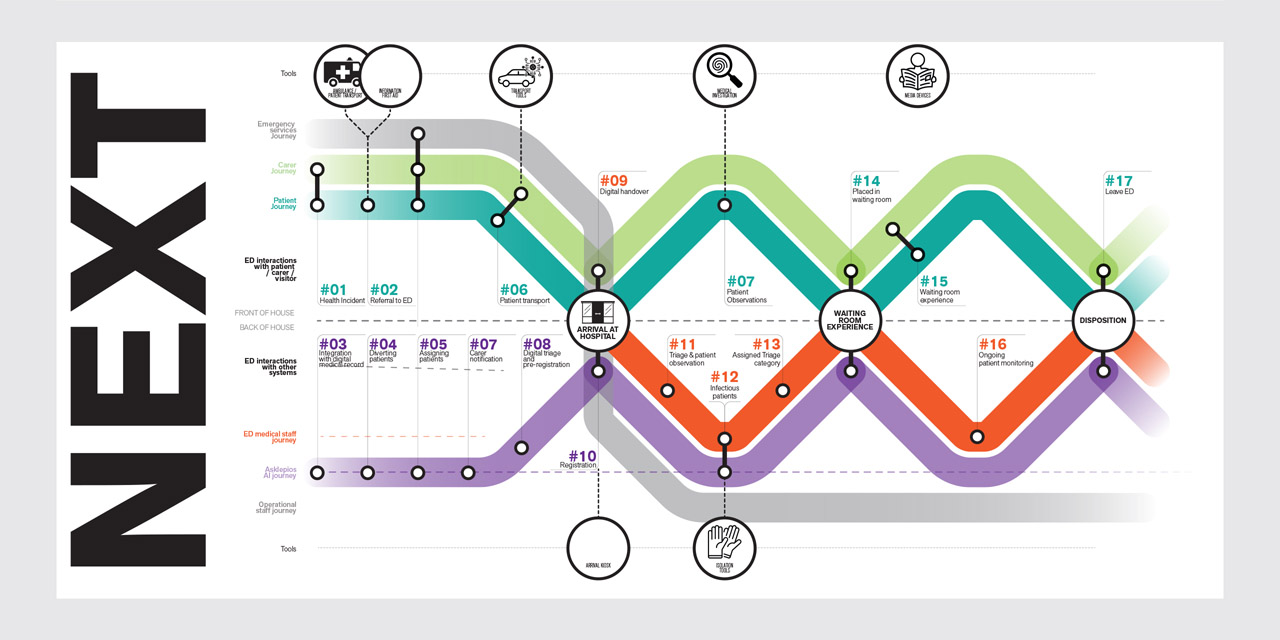This creative outcome delivered within the PhD study is comprised of three parts: a suite of comic stories that highlight future service experiences in the ED, a series of prototype artefacts and associated renders, and an ‘exhibition in a box’ which acts as both a place and method for provoking conversations and thinking into the design of future ED environments.
This creative outcome extrapolates upon the trends present in the contemporary ED, and are grounded within real stories collected through qualitative research. The diverse articulates of design practice were chosen as the format over other methods of communication — videos, theatrical presentations, websites – to make the work accessible, where no other medium or tool is required to interpret the work.
The deliberately abstracted and low-fidelity nature of this outcome intends to invite reflection upon the notion that the future of the ED is not yet fixed, and open to multiple interpretations by different viewers.
While the creative outcome can be viewed in the three distinct parts and visuals attached to this application, the project in full can be viewed at the following website: https://emergencydepartmentfutures.com/

